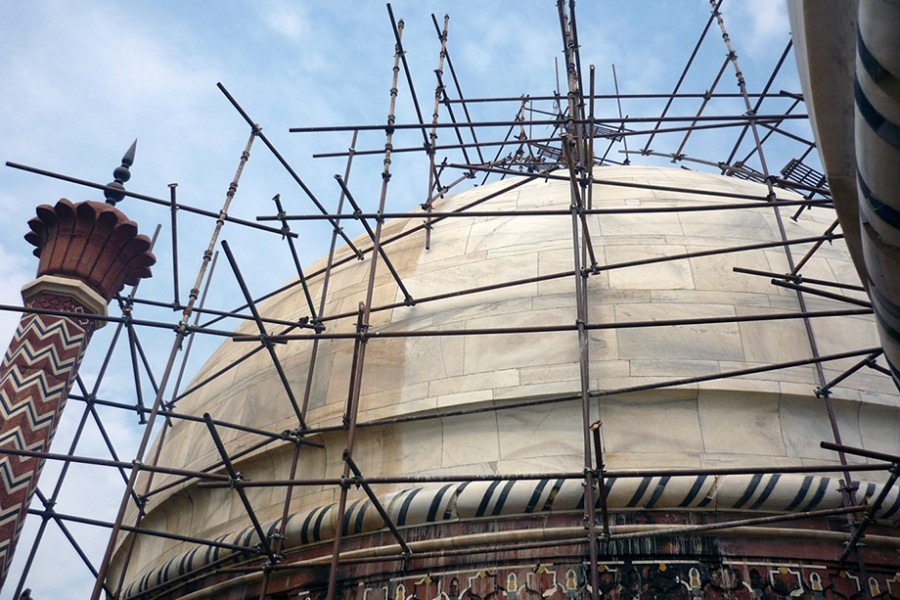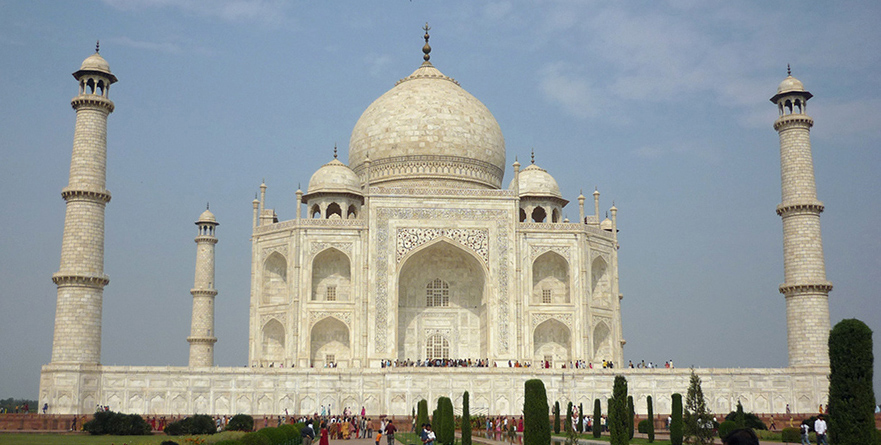

By John Toon, Georgia Tech Research News
The Taj Mahal’s iconic marble dome and soaring minarets require regular cleaning to maintain their dazzling appearance, and scientists now know why. Researchers from the United States and India are pointing the finger at airborne carbon particles and dust for giving the gleaming white landmark a brownish cast.
Knowing the culprits in the discoloration is just the first step in cleaning up the Taj Mahal. Scientists now must determine where the particles are coming from to develop strategies for controlling them.
“Our team was able to show that the pollutants discoloring the Taj Mahal are particulate matter: carbon from burning biomass and refuse, fossil fuels, and dust – possibly from agriculture and road traffic,” said Michael Bergin, a professor in the School of Civil and Environmental Engineering at the Georgia Institute of Technology. “We have also been able to show how these particles could be responsible for the brownish discoloration observed.”
|
Supported by the Indo U.S. Science and Technology Forum, the U.S. Environmental Protection Agency, and the National Science Foundation, the research was reported online December 3, in the journal Environmental Science & Technology. In addition to Georgia Tech, researchers from the Indian Institute of Technology at Kanpur (IIT-K), Archaeological Survey of India (ASI), and the University of Wisconsin, collaborated on the project.
Built in the 1600s by Mughal emperor Shah Jahan in memory of his third wife, Mumtaz Mahal, the structure is a mausoleum that includes a massive marble dome 115 feet high and minarets that reach 130 feet. Attracting millions of visitors each year, the Taj Mahal became a UNESCO World Heritage Site in 1983.
Beginning in the 1970s, observers noted a brownish cast to the white marble that makes up the structures. Today, routine cleaning, including the painstaking application and removal of a clay material, maintains the brightness of the marble. Air pollution had been suspected as the culprit responsible for the discoloration, but no systematic study had been done and the specific components of the air pollutants responsible for the discoloration and the mechanisms by which they discolor the surface had remained unknown.
To find out what was causing the color change, a team from four different institutions was assembled. In addition to Bergin, it included Sachchida Nand Tripathi and Tarun Gupta from the Indian Institute of Technology in Kanpur, India; K.S. Rana from the Archaeological Survey of India in Delhi; Martin M. Shafer, Ana M. Villalobos, and James J. Schauer from the University of Wisconsin’s Environmental Chemistry and Technology Program, and J. Jai Devi and Michael Mckenzie from Georgia Tech.
